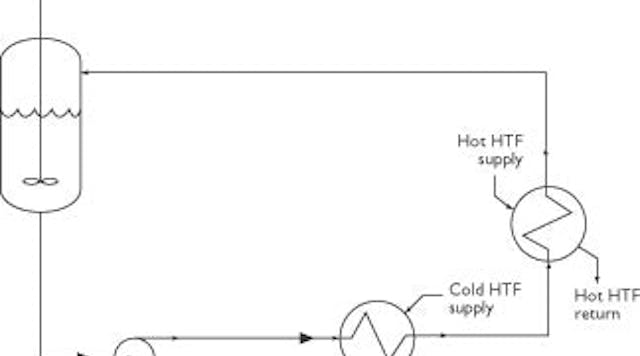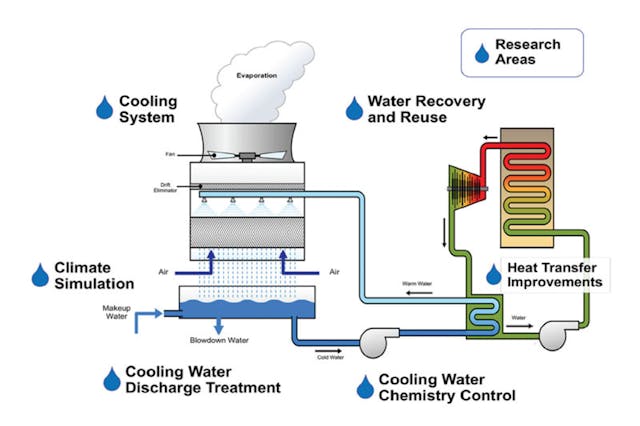A Comprehensive Guide to Picking the Right Heat Transfer Solutions for Your Needs
Selecting the appropriate Heat transfer system is necessary for functional effectiveness. Various systems deal with various requirements, affected by elements such as temperature level array and fluid type. Understanding the concepts behind Heat transfer, such as transmission, convection, and radiation, is vital. Furthermore, assessing energy resources and upkeep practices can affect long-lasting efficiency. A closer evaluation of these factors to consider exposes how to tailor a system to certain requirements. What should one prioritize in this facility decision-making procedure?
Comprehending Heat Transfer: Secret Concepts and Principles
Heat transfer might seem like a simple idea, it incorporates a variety of concepts that are basic for reliable system design - DVS Heat Transfer Systems. Comprehending these concepts is important for developers and designers that intend to optimize thermal performance in different applications. Transmission, for circumstances, entails the transfer of Heat via strong products, while convection describes the motion of Heat within fluids. Radiation, another vital concept, defines exactly how Heat can be transferred through electromagnetic waves. Each of these systems plays an essential role in figuring out just how power relocates within a system. By extensively comprehending these principles, specialists can make enlightened choices, ensuring that Heat transfer systems operate efficiently and meet the details demands of their applications
Sorts Of Heat Transfer Solutions: An Overview
Recognizing the principles of Heat transfer prepares for exploring the numerous kinds of Heat transfer systems available. Heat transfer systems can be classified largely right into three kinds: convection, conduction, and radiation. Transmission entails Heat transfer via strong products, depending on straight call between fragments. Convection, on the various other hand, takes place in liquids (gases and liquids) where the activity of the fluid itself helps with Heat transfer. Radiation entails the transfer of Heat through electromagnetic waves and does not call for a medium, enabling it to take place in a vacuum. Each type of system has distinct characteristics and applications, making it vital for individuals and organizations to meticulously assess their certain demands when choosing one of the most suitable Heat transfer solution.
Applications of Heat Transfer Systems in Numerous Industries
Heat transfer systems play a crucial function across numerous industries, affecting performance and item quality. In industrial production procedures, they assist in precise temperature control, while in food and drink processing, they assure safety and conservation. Additionally, a/c and climate control systems count heavily on efficient Heat transfer to preserve comfy settings.
Industrial Production Processes

Numerous industrial production procedures count heavily on efficient Heat transfer systems to make best use of productivity and boost product quality. In markets such as metalworking, Heat exchangers play an important function in preserving optimal temperature levels during welding, spreading, and building. These systems guarantee uniform Heat distribution, which is vital for achieving desired material buildings. In the chemical production sector, Heat transfer systems facilitate accurate temperature control during responses, impacting return and safety and security. In fabric production, reliable Heat monitoring is vital for coloring and completing processes, affecting shade consistency and material high quality. By selecting appropriate Heat transfer innovations, makers can enhance energy performance and reduce operational costs, ultimately leading to an extra competitive and sustainable manufacturing environment.
Food and Drink Handling
Reliable Heat transfer systems are just as crucial in the food and drink handling market, where preserving ideal temperatures is essential for food safety and security and top quality. These systems play a necessary role in procedures such as sanitation, pasteurization, and food preparation, guaranteeing that items are safe for usage and keep their nutritional value. Heat exchangers, for example, effectively move Heat between liquids, optimizing energy usage while lessening temperature changes. Additionally, refrigeration systems are fundamental for maintaining disposable things and extending shelf life. The option of Heat transfer innovation directly affects operational performance and product stability, making it vital for food and drink producers to select the suitable systems customized to their certain handling needs. This cautious choice eventually adds to consumer complete satisfaction and food security.

Heating And Cooling and Climate Control
While several industries count on Heat transfer systems for efficiency, COOLING AND HEATING (Heating, Air Flow, and Air Conditioning) plays a crucial function in keeping indoor climate control throughout different setups. These systems utilize Heat transfer principles to regulate humidity, temperature level, and air high quality, ensuring comfort and security in property, commercial, and industrial settings. Appropriately designed a/c systems enhance power performance, lower functional costs, and reduce ecological impact. In commercial buildings, for example, effective environment control adds to staff member productivity and customer fulfillment. In industrial applications, heating and cooling systems assist preserve suitable conditions for tools procedure and product preservation. Selecting the ideal Heat transfer system is essential for conference specific climate control needs and achieving overall system performance.
Evaluating Power Sources for Heat Transfer Equipments
In reviewing power resources for Heat transfer systems, a comparison of sustainable power options and fossil gas factors to consider is essential. Eco-friendly resources, such as solar and wind, deal sustainable choices that can reduce ecological impact. Alternatively, fossil gas continue to be common because of their recognized infrastructure and energy thickness, triggering a mindful analysis of both alternatives.
Renewable Energy Options

Fossil Fuel Considerations
Reviewing nonrenewable fuel source considerations is necessary for the performance and sustainability of Heat transfer systems. Fossil gas, such as gas, oil, and coal, are conventional energy sources that provide substantial Heat outcome, making them popular selections for click over here now household and industrial applications. Their environmental impact, including greenhouse read this article gas emissions and source deficiency, elevates concerns. When choosing a heat transfer system, it is essential to evaluate the schedule, expense, and regulatory variables related to these fuels. Furthermore, the performance of fossil fuel systems have to be thought about, as greater efficiency can alleviate some ecological drawbacks. Inevitably, a well balanced approach evaluating performance and sustainability can assist decision-makers toward the most ideal Heat transfer service for their details demands.
Factors to Take Into Consideration When Picking a Warmth Transfer System
Picking an appropriate Heat transfer system needs careful consideration of different factors that can significantly influence efficiency and performance. One vital element is the operating temperature array, which determines the materials and style ideal for the application. Additionally, the type of liquid made use of in the system-- whether gas or liquid-- impacts Heat transfer effectiveness and compatibility. The system's size and capability have to straighten with the details requirements of the operation to prevent inadequacies. Power resource schedule is additionally necessary, affecting operating expense and sustainability. The installment setting, consisting of space restraints and access for maintenance, plays a substantial role in system selection. Lastly, governing compliance and security criteria need to be thought about to guarantee the system satisfies all legal requirements.
Upkeep and Effectiveness Optimization for Heat Transfer Equipments
Maintaining Heat transfer systems is crucial for ensuring optimal performance and long life. Routine maintenance tasks, such as cleaning up Heat exchangers and inspecting insulation, aid stop efficiency losses as a result of fouling and thermal connecting. Furthermore, keeping an eye on system specifications, consisting of stress and temperature level, permits early discovery of abnormalities, reducing downtime and costly repair services. Implementing a preventative upkeep routine can enhance performance and prolong the lifespan of parts. Upgrading to advanced control systems can enhance operational efficiency by adjusting to varying tons and conditions. By prioritizing upkeep and efficiency optimization, operators can achieve decreased energy usage, reduced operational prices, and enhanced general system integrity, ultimately resulting in far better source utilization and a more sustainable procedure.
Future Patterns in Heat Transfer Technologies
As markets significantly prioritize sustainability and energy efficiency, future patterns in Heat transfer modern technologies are established to undertake significant improvements. Developments such as advanced materials, consisting of look at this website carbon nanotubes and nanofluids, promise improved thermal conductivity and effectiveness. In addition, the assimilation of renewable resource resources into Heat transfer systems is getting momentum, promoting environment-friendly remedies. Smart technologies, consisting of IoT sensors, are expected to change monitoring and control, allowing real-time data evaluation for enhanced performance. Additionally, the development of portable and modular systems will certainly promote less complicated installation and maintenance, satisfying diverse applications. These innovations suggest a shift in the direction of more sustainable, effective, and adaptable Heat transfer options, lining up with global power goals and ecological requirements.
Often Asked Concerns
What Are the Environmental Influences of Heat Transfer Equipments?
The ecological effects of Heat transfer systems can include greenhouse gas discharges, power consumption, and prospective thermal air pollution. Furthermore, incorrect disposal of inadequacies and materials can add to resource exhaustion and community disturbance.
Just how Do I Determine the Cost-Effectiveness of a Warmth Transfer System?
To determine the cost-effectiveness of a heat transfer system, one must examine first costs, functional expenses, maintenance demands, and energy effectiveness, comparing these aspects versus the expected life expectancy and efficiency of the system.
Can Heat Transfer Solution Be Utilized in Residential Setups?
Heat transfer systems can indeed be utilized in property settings. They give efficient heating and cooling down remedies, making homes extra comfy while possibly lowering energy prices. Their flexibility permits for various applications in household atmospheres.
What Safety And Security Laws Apply to Heat Transfer Equipments?
Security laws for Heat transfer systems generally include standards on upkeep, operation, and setup. Compliance with regional building regulations, supplier requirements, and market standards is necessary to assure reliable and secure system performance in various applications.
Exactly How Do Different Materials Affect Heat Transfer Performance?

Conduction, for instance, involves the transfer of Heat via strong products, while convection refers to the motion of Heat within fluids. Comprehending the principles of Heat transfer lays the groundwork for checking out the different types of Heat transfer systems readily available. Heat exchangers, for instance, effectively move Heat between fluids, maximizing power usage while minimizing temperature fluctuations. In reviewing power resources for Heat transfer systems, a contrast of sustainable power alternatives and fossil fuel factors to consider is vital. Steels, such as copper and light weight aluminum, conduct Heat effectively, whereas insulators like rubber and glass slow down Heat flow.